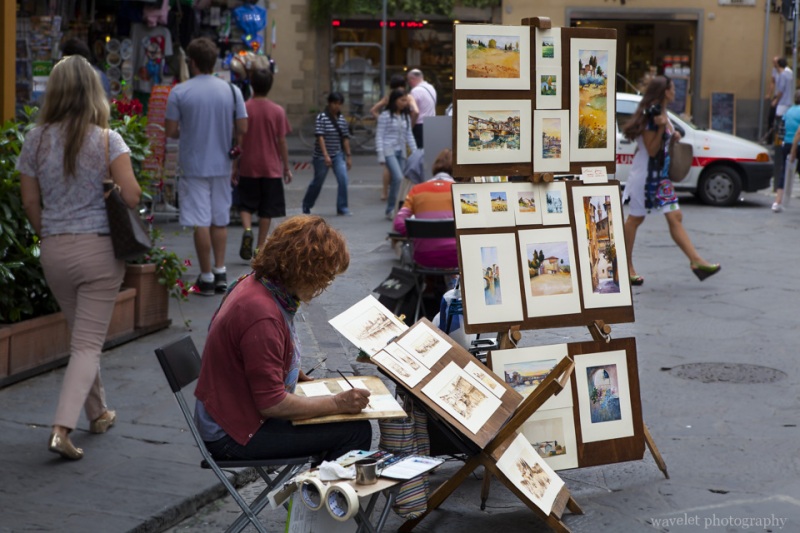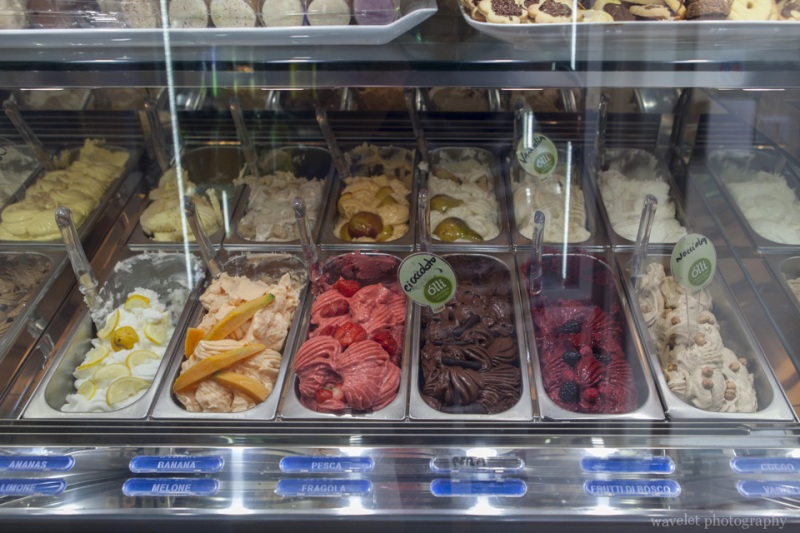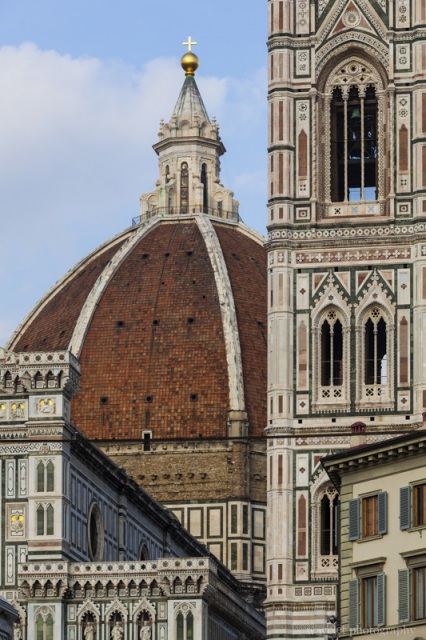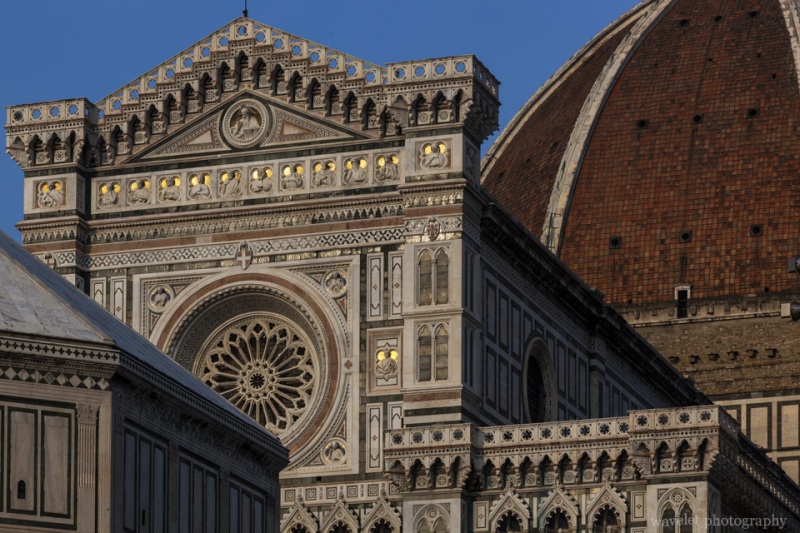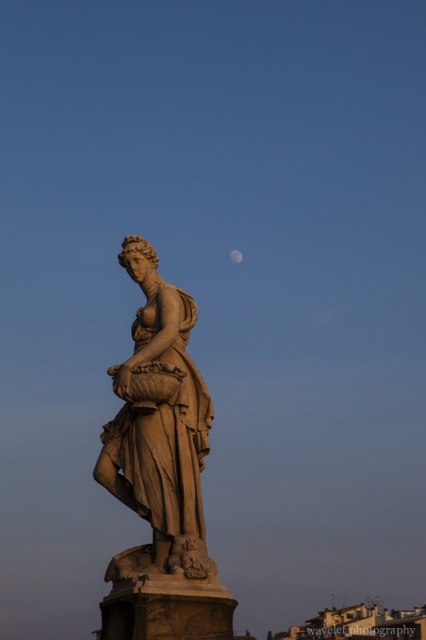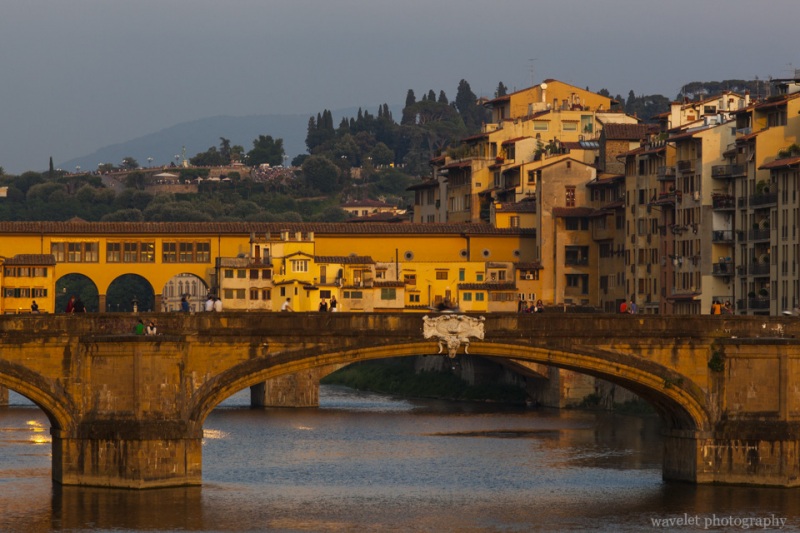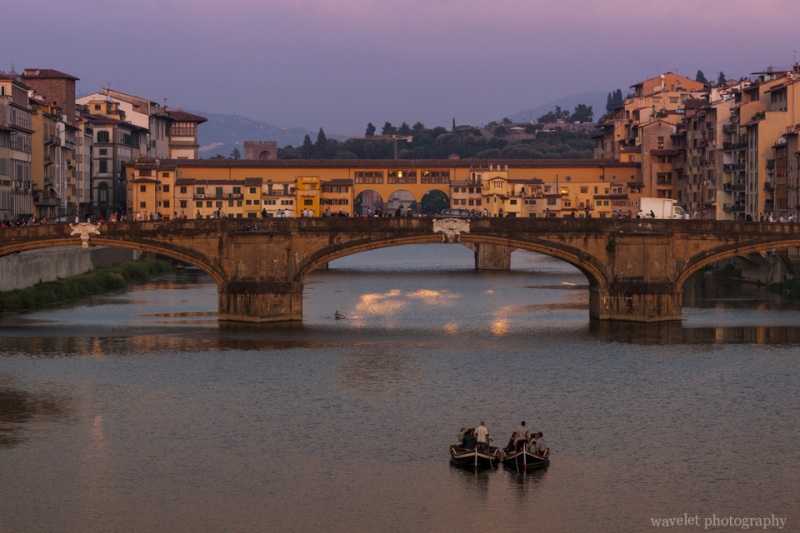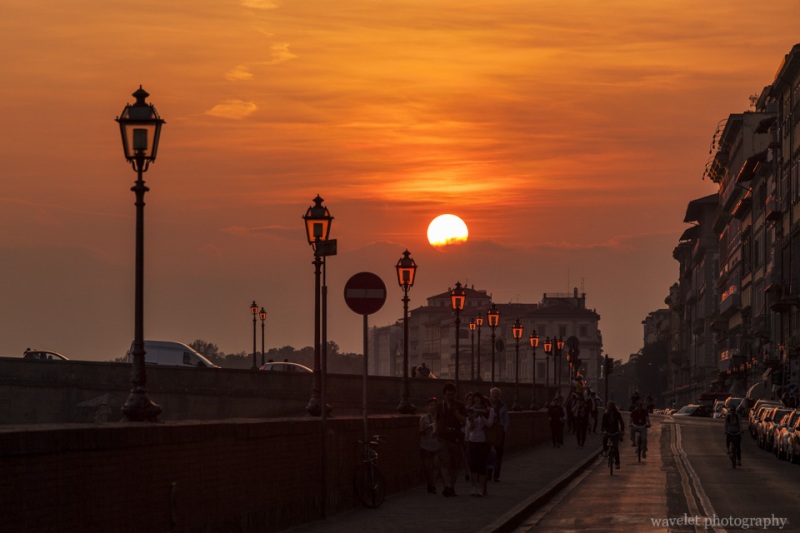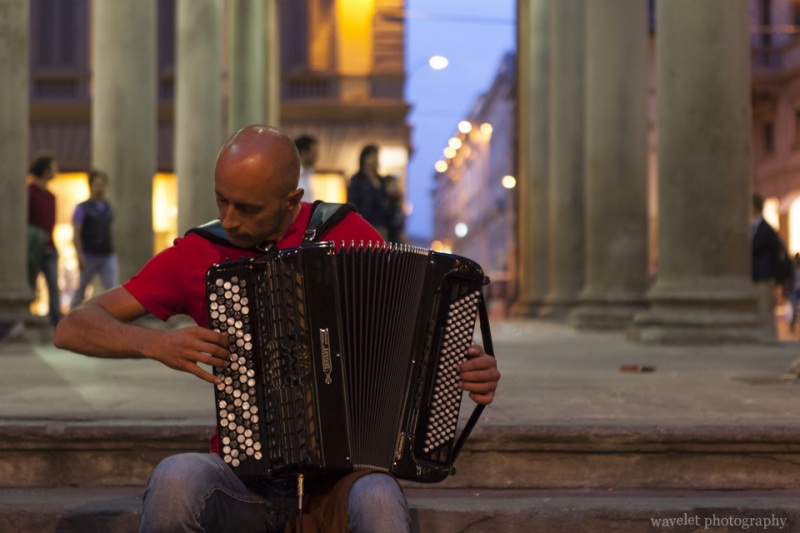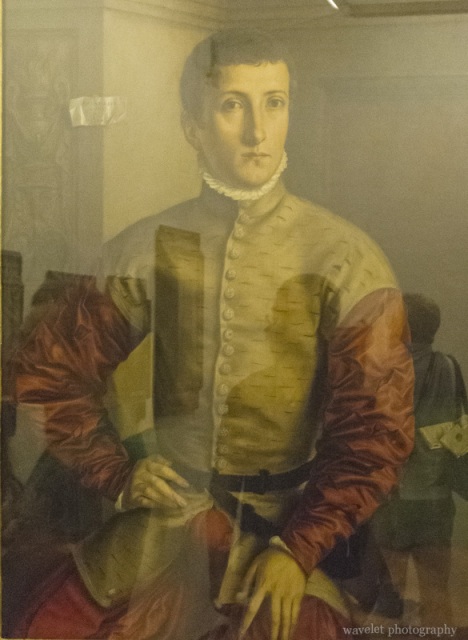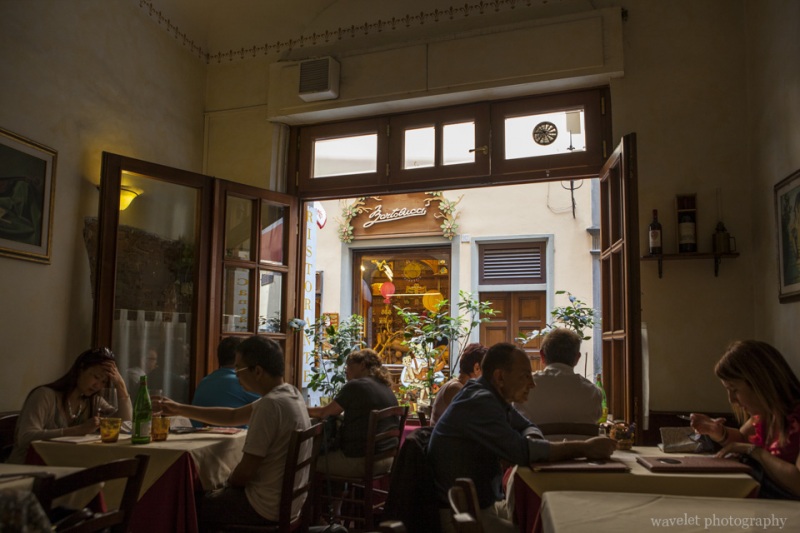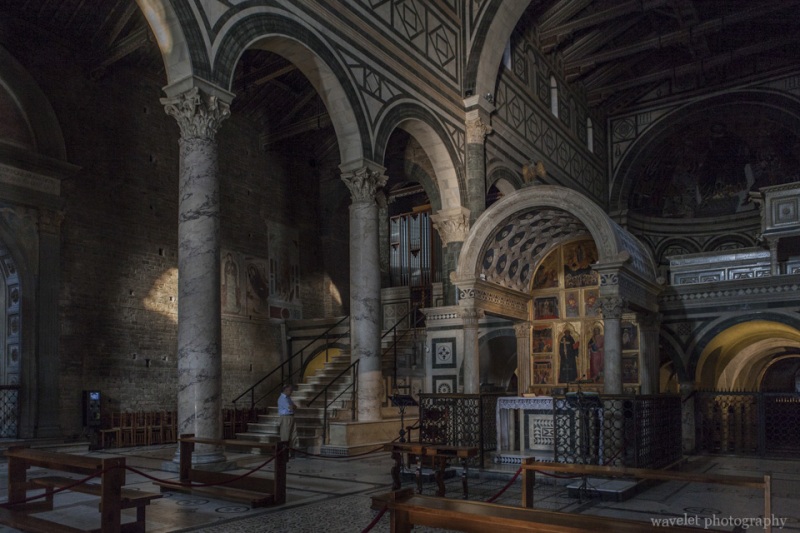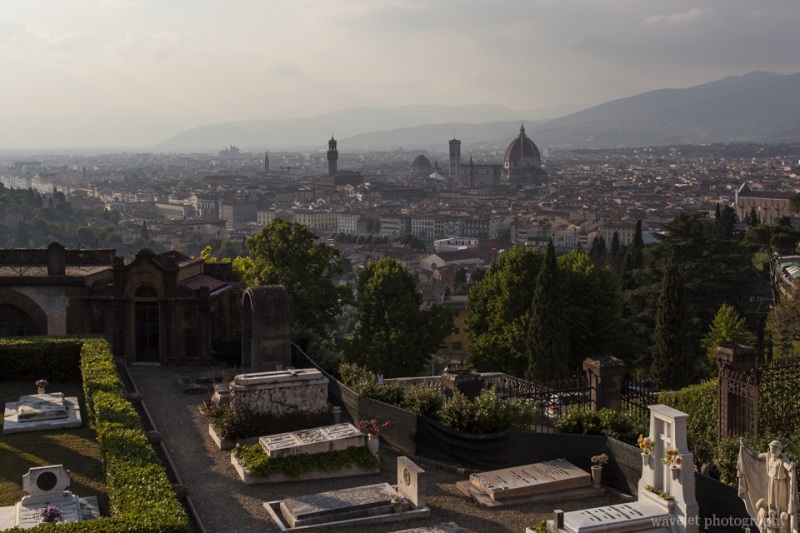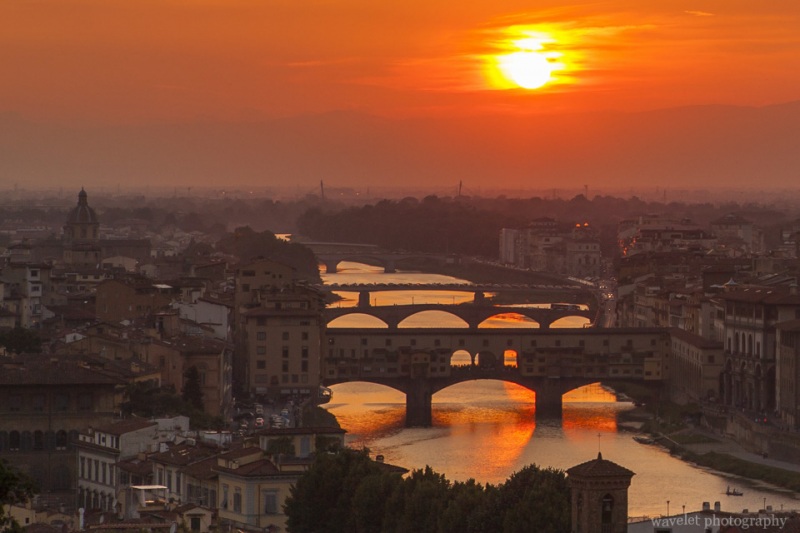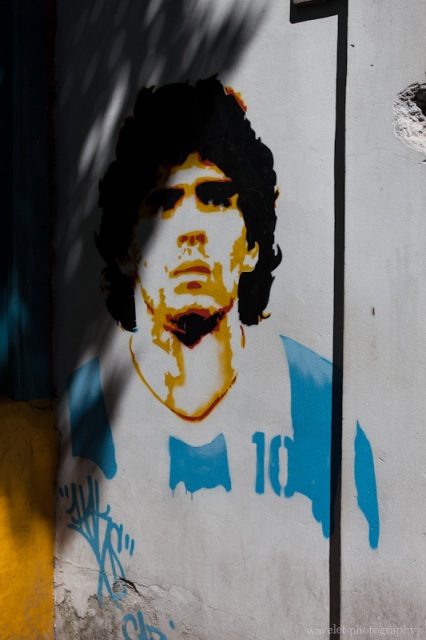Tuscany – Florence – A Romantic City
2012.6.1~2In the afternoon, we first went to Galleria dell’Accademia (Academy of Fine Arts, official site). Established in 1563, It was the first school in Europe specifically teaching the techniques of drawing. The line at the entrance quite long. The most famous work housed by the Academy is the original David by Michelangelo, but what is more unforgettable is a colorful copy of blonde David standing at the courtyard. Humorous? Ridiculous? Bold to say the least.
After left Galleria dell’Accademia, we walked around Piazza San Marco.
It’s already late afternoon at the time we returned to Piazza del Duomo. The sunshine drifted up gradually along the cathedral and the bell tower, with the color was getting warmer from very bright to golden.
My wife went to Ponte Vecchio to listen to Claudio Spadi’s music again. I walked along River Arno between Ponte Vecchio and Ponte Santa Trinita and tried to capture the beautiful sunset that painted the city and sky with orange and purple color.
We started walking back to the hotel after the sun sunk below the horizon. Mercato Vecchio (The Old Market) was filled with souvenirs and antiques stands during daytime but now it’s all empty but one playing accordion. It was the first time I heard someone play classic music, such as Pachelbel’s Canon and Vivaldi’s The Four Seasons, by accordion.
In the next day morning, we went to see the museum you don’t want to miss, Uffizi. It is one of the most prestigious museums in the world because of its vast amount of collections and their quality. Some of famous works include, Titian’s Venus of Urbino, Sandro Botticelli’s The Birth of Venus and Michelangelo’s Doni Tondo. Most of the displays were Medici family’s collections. No wonder in the earlier day, when I was at Piazza Santa Maria Novella, I saw a banner read something like, “too bad today’s arts collectors’ tastes are not as good as Medici’s”. We reserved the tickets through our hotel on the day of our arrival, otherwise the waiting queue would be much longer. Photography was not allowed in Uffizi, but I couldn’t help to taking a shot at this one. Is he a time traveler?
We had some time walking around the city before going back to the hotel.
The afternoon time was reserved for shopping. Florence is one of top fashion capitals of the world. One major upscale shopping street, Via de’ Tornabuoni, where many high fashion boutiques are located, is only steps away from the hotel.
After walking in and out these fashion stores for two hours, I finally convinced my wife to go to Piazzale Michelangelo as our city tour’s last destination. The taxi dropped us near San Miniato al Monte so we had chance to first see this beautiful Romanesque church on the very top of the hill.
Piazzale Michelangelo offers a spectacular panorama view of the city. Locals come here for picnic, couples take wedding photos and tourists gather at west steps listening to music and waiting for the sunset. Although our days at Florence all started cloudy, they always cleared up in the afternoon. We had three gorgeous sunsets in a row. Looking down from the square, all the historical landmarks we have visited stood one after another in front of our eyes. The entire city were bathed in the beautiful red glow. Our trip ended on the most romantic note.


